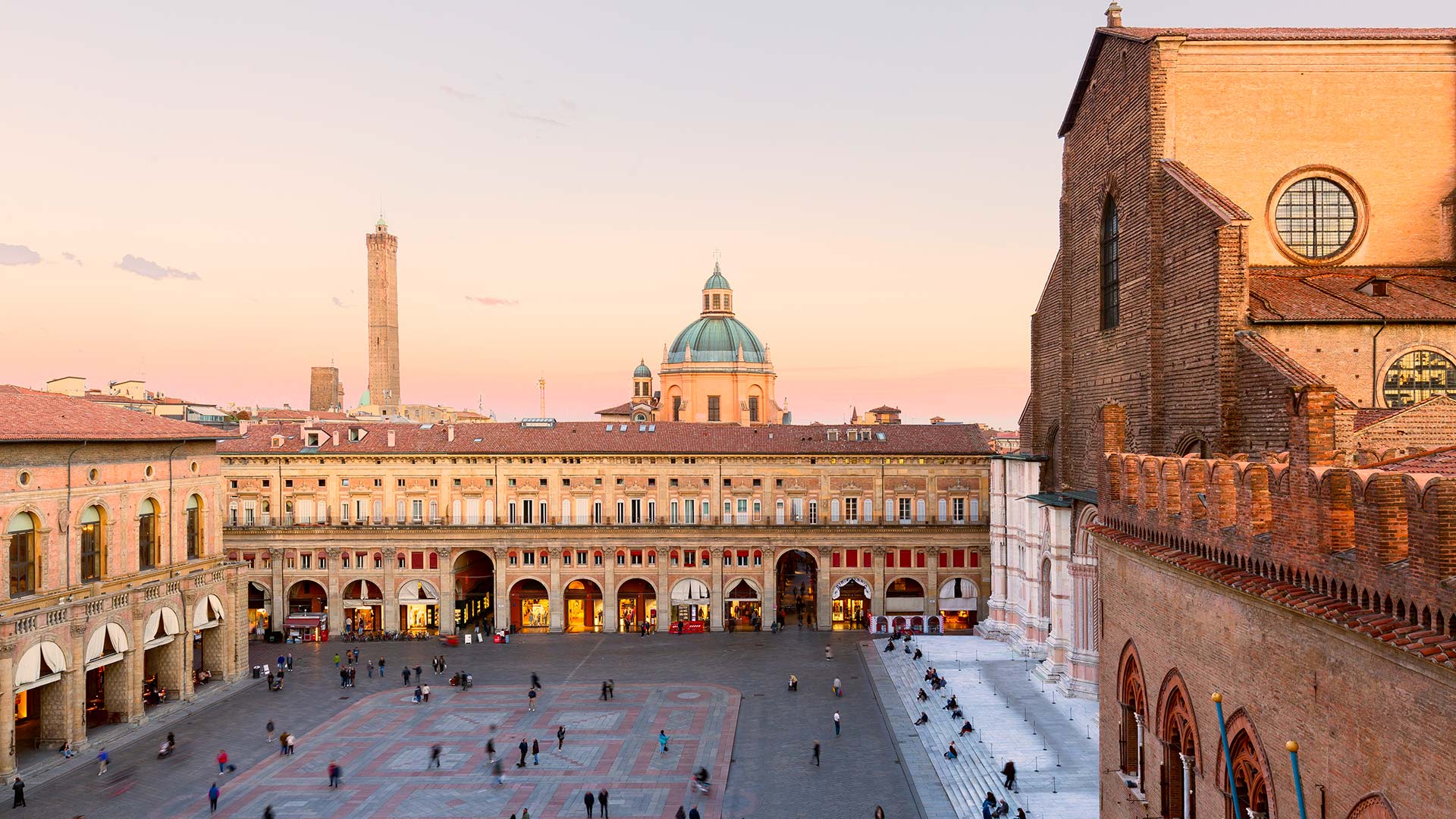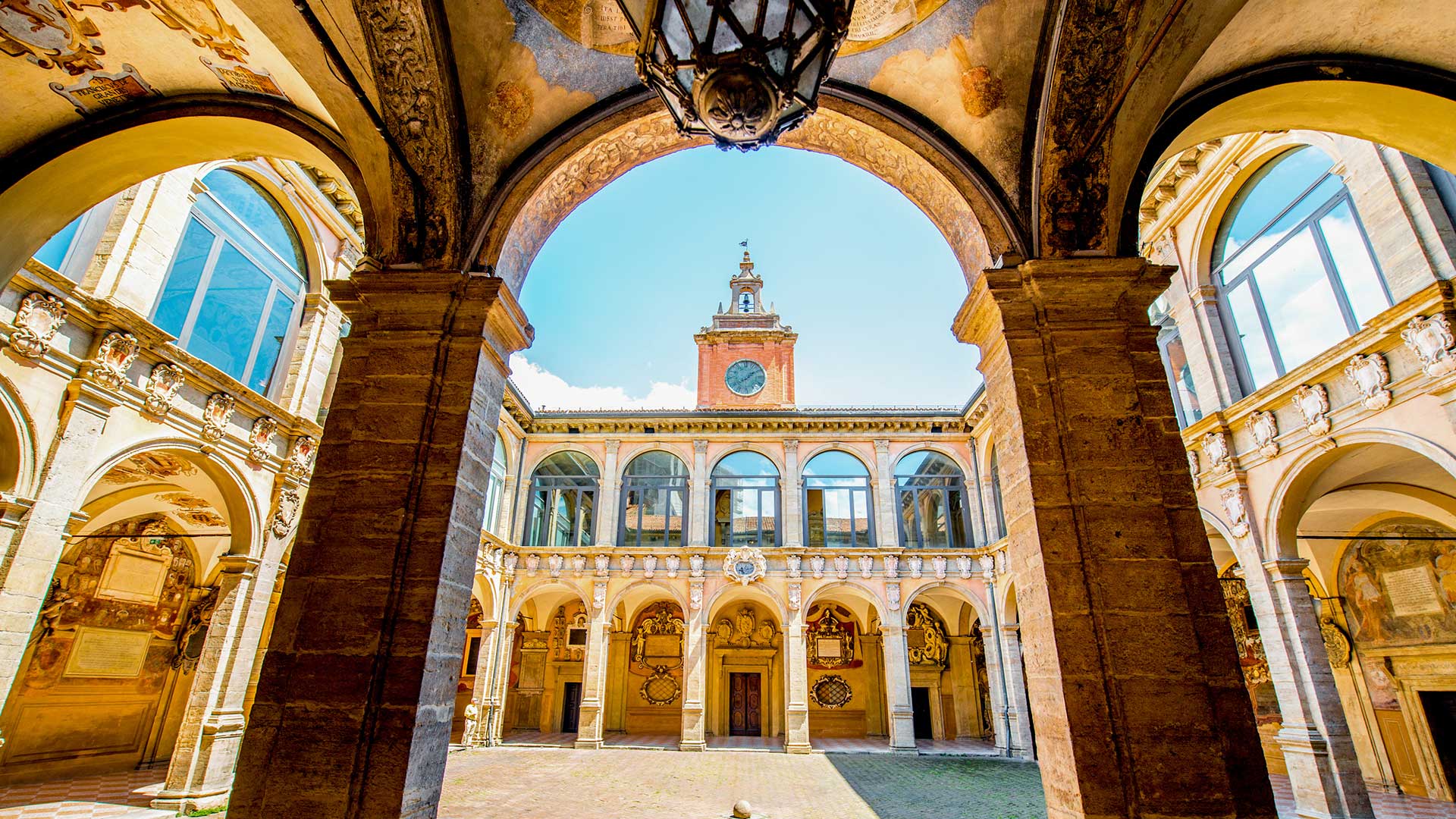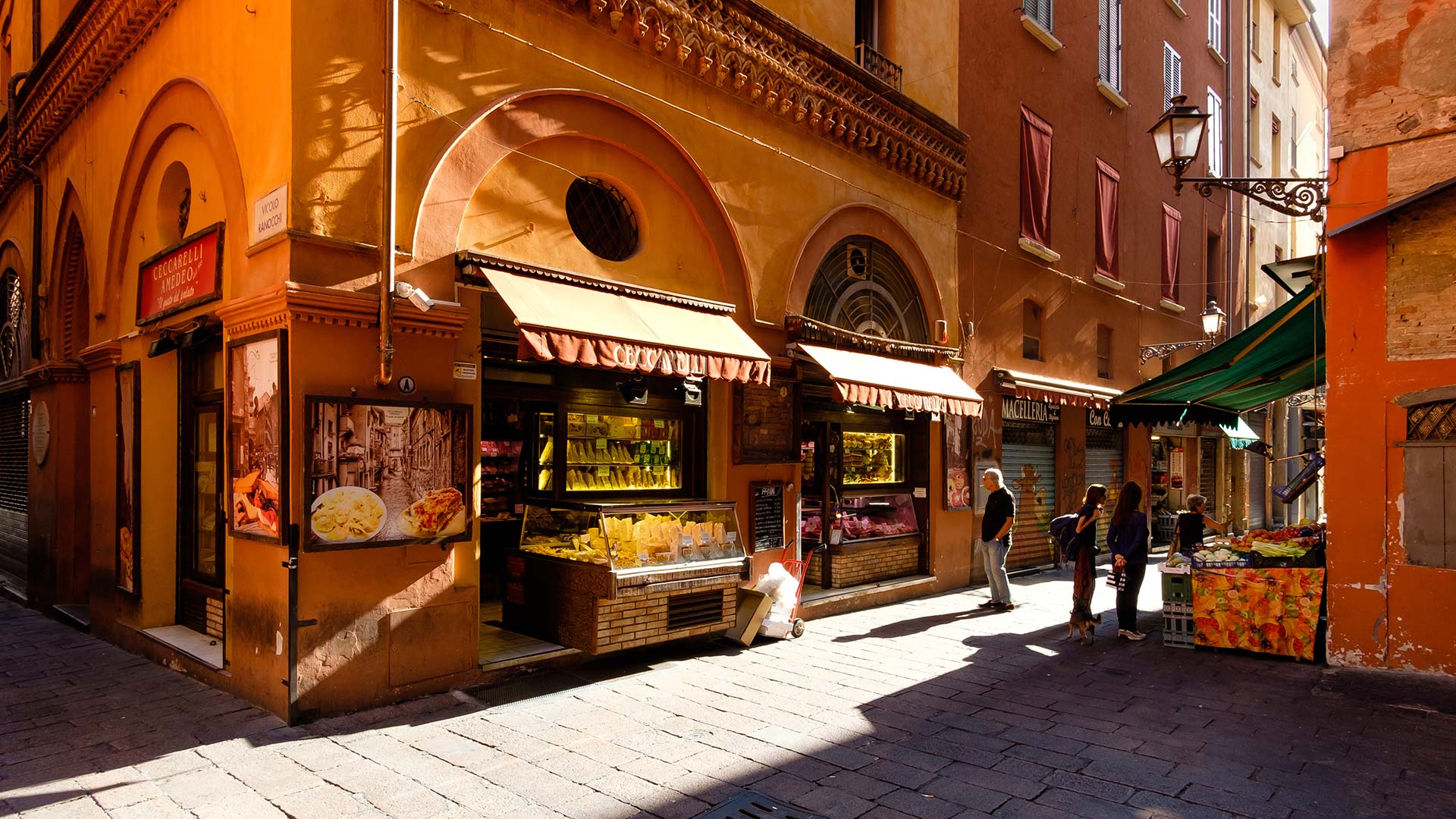Why visit Bologna, the sumptuous red city in Emilia-Romagna
Why visit Bologna, the sumptuous red city in Emilia-Romagna

Bologna. Medieval city in Emilia Romagna in Italy Europe. Art and culture. Tourists from all over the world for Piazza Maggiore.
A real gem in Emilia-Romagna, Bologna enthralls visitors with its Renaissance heritage, fine food, and friendly atmosphere. Dubbed the red city after its terracotta roofs, it contains a host of treasures just waiting to be discovered.
For its unparalleled historical and architectural heritage
The capital of the Emilia-Romagna region in Italy, Bologna is first and foremost an architectural treasure. Dating from the 12th century, its famous porticos or portici snake through the city over almost 40 kilometers, in a maze of ancient streets that are listed as a UNESCO World Heritage Site. Strolling under these stone arches, you feel the pull of nine centuries of history while enjoying welcome shade on hot summer days. However, these porticos do not only provide protection, they are also home to myriad boutiques and cafes where you can savor the gentle Bolognese way of life.
At the heart of the city, most of the monuments are concentrated in Piazza Maggiore. The majestic Gothic basilica of San Petronio attracts the eye with its unusual unfinished facade. Take the time to climb up to its terrace: the view over Bologna’s rooftops is breathtaking! At its foot, the Palazzo d’Accursio has been the seat of the town hall since 1336. However, the Asinelli and Garisenda towers a few streets away will probably be the highlight of your visit. Rising up 97 meters, the first rewards you with an unbeatable viewpoint after climbing its 498 steps; the second, smaller but at a tilt, is strangely reminiscent of the Tower of Pisa.
For its university, the oldest in the world
Founded in 1088, the University of Bologna is the oldest university in the world still running, a real pillar of European culture and science. Here you walk in the footsteps of legendary figures such as Dante, the father of the Italian language, and Copernicus, famous for having defended the theory of heliocentrism. In Bologna’s historic center, you go through the doors of Palazzo dell’Archiginnasio, the former seat of the university, to find walls covered in some 6,000 coats of arms of students and professors. Dating back to 1637, its anatomy lecture theatre, a wooden room previously used for public dissections, displays statues of great anatomists who attended the University of Bologna, standing alongside Hippocrates, the father of medicine in Ancient Greece.

Bologna, Italy - May 23, 2016: Inner yard of Archiginnasio of Bologna that houses now Municipal Library and the famous Anatomical Theatre. It is one of the most important building in Bologna.
Bologna remains a vibrant university city with an incomparable ambience, welcoming students from all around the world and buzzing throughout the year with exhibitions, conferences and cultural festivals.
For its Quadrilatero, the gourmet and merchant heart of Bologna
At the foot of San Petronio Basilica, the Quadrilatero district is Bologna’s commercial and food hub. For centuries, this network of narrow streets has been teeming with must-visit addresses: artisanal shops, which you can guess from the name of the streets (Drapery Street, Locksmiths’ Street), and food businesses that keep local traditions alive. Fishmongers, cheesemongers and grocers proudly display their wares, often directly on wooden tables set up outside under the porticos or corbel arches. At its heart, the Mercato di Mezzo is a foodlovers’ paradise. You can taste local specialties on the spot or buy fresh produce to bring back home. The storekeepers will tell you: mortadella, a cold meat native to the city, should be enjoyed just as it is, finely sliced, with a glass of white lambrusco and a few mouthfuls of pecorino dei Colli Bolognesi.

Bologna, Italy - September 4, 2016: Grocery stores in the "Quadrilatero" in Bologna. The "Quadrilatero" in Bologna, Italy, is an area enclosed by four roads, famous in all the way to the grocery stores with quality products
For its museums worthy of major capitals
Warm and colorful, the red city also boasts a wealth of museums. At the edge of the Giardino del Cavaticcio, the Museo d’Arte Moderna di Bologna (MAMbo) is one of the largest contemporary art museums in Italy. Among others, it is home to the richest collection of works by Giorgio Morandi, a modern painter and engraver native to Bologna. Even more fascinating, the Pinacoteca Nazionale brings together major works from the Italian Renaissance, including those by old masters such as Raphael, Perugino, Giotto and the Carracci brothers.
For history buffs, the Museo civico Archeologico and Museo civico Medievale are a must. Housed in a 17th-century palace, the first traces the history of Emilia-Romagna since prehistoric times. The second plunges you into the intrigues of Bologna’s great families in the Middle Ages, with sparkling armor and precious manuscripts. Last but not least, don’t miss the Davia Bargellini industrial art museum, a real cabinet of curiosities that presents the craftsmanship of a city that is always in motion.
For the authenticity of its Bolognese cuisine
In Italy and elsewhere, Bologna is synonymous with fine food. Here, eating is not just a pleasure, it’s a way of life! World famous but often incorrectly called “spaghetti bolognese,” tagliatelle al ragù bolognese finds its true expression here: a tomato ragù combining ground beef and pancetta, served with fresh tagliatelle and parmesan. Simple and incredibly tasty! Another delicacy from Emilia-Romagna, cotoletta alla bolognese is an extremely gourmand variation on veal Milanese, in which a breaded veal cutlet is generously sprinkled with parmigiano reggiano and wrapped in Parma ham.
To discover these specialties in an authentic setting, visit Trattoria di Via Serra, a simple and friendly restaurant in Bolognina, the former working class district with a host of great places to eat. More central, Trattoria da Me is a sure bet with its menu that stays true to traditional recipes and a number of specialties with a twist.
For all the other major Italian cities just a drive away
Located at the heart of Northern Italy, on European Route E45 that connects Sicily to Norway’s northernmost county, Bologna is an ideal starting point for exploring the treasures of Italy. In less than two hours, you can reach Florence, the cradle of the Renaissance, renowned for its museums and architecture. Venice, the romantic city on the water, awaits you the same distance away on the Adriatic Coast. Other gems such as Verona, the city of Romeo and Juliet, or Parma, with its refined look so well described by Stendhal, can be reached in under two hours. Even the fashion capital Milan is only three hours away!
Feel like getting away from it all?
See our suggestions for novel trips and must-see places to visit near your home or holiday destination.